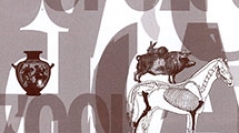

 Anthropozoologica
49 (2) - Pages 177-194
Anthropozoologica
49 (2) - Pages 177-194Work at Barāqish/Yathill in 2005-06 has produced sequences encompassing the Sabaean (13th-6th centuries BC) and Minaean/Arab (c. 550 BC-AD 1) occupations. Abundant animal remains were retrieved and contexts of use and discard were obtained. Camels and donkeys are studied together as pack animals, the camel being the domestic dromedary. Their zooarchaeological and contextual study at Yathill is justified from this city’s location on the famous frankincense caravan route of the 1st millennium BC. An extramural stratigraphic sequence documenting the relationships between the city and the adjoining plain from c. 820 BC to the Islamic era was investigated to the northwest of the Minaean wall. Domestic camels were present by 800 BC, the earliest well-documented occurrence in Yemen; wild dromedary herds were still in the area during the 7th century and perhaps later. The study of the archaeological context links these Sabaean-age camels to campsites possibly formed by non-residents. This pattern greatly developed during the Minaean period, with trade-jar handling posts outside the walled city and frequent stationing of camels and donkeys on the upper talus. Such data directly support the role of Yathill in the overland caravan trade and suggest that the extramural area was functionally important in this respect.
Dromedary (Camelus dromedarius), Camelus sp. wild, donkey (Equus asinus), caravan trade, archaeological indicators of ‘caravan’ activity, ‘frankincense route’ in Yemen, Barāqish, Yathill